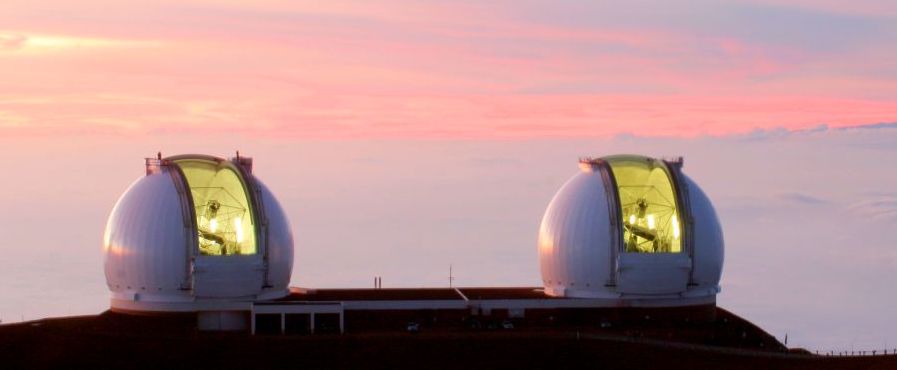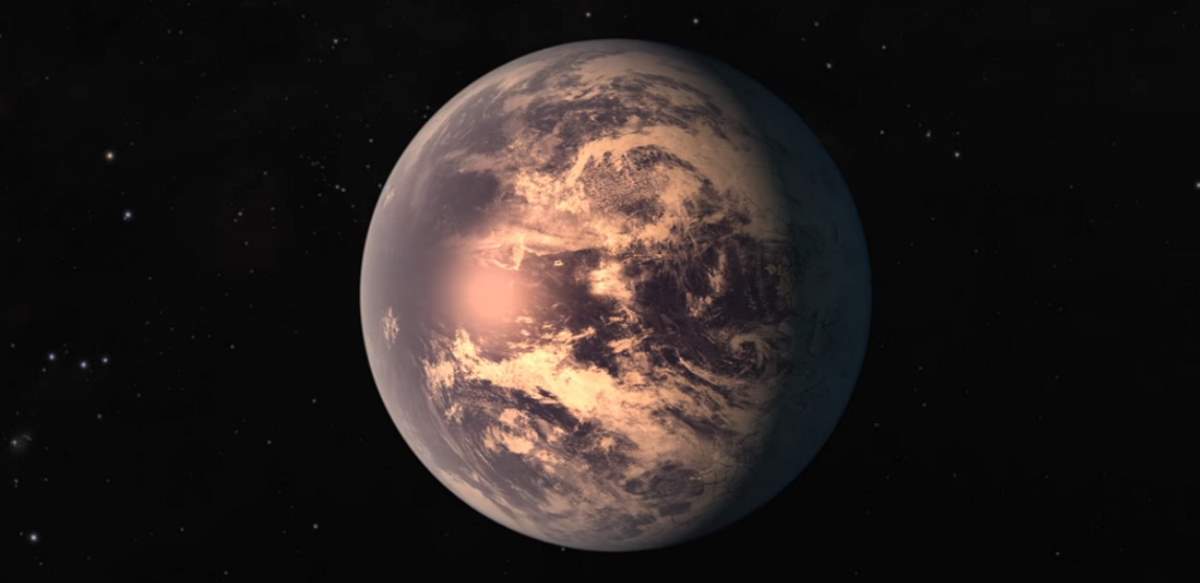Hey! I'm Daria.

I am a fourth-year PhD Candidate in the Department of Earth and Planetary Sciences at the University of California, Riverside. I completed my undergraduate studies in biology in 2017, where I was the first student at my institution to conduct research in astrobiology. Fascinated by the search for life on other worlds, I went on to spend 2.5 years at NASA's Goddard Space Flight Center working on terrestrial exoplanet detection and characterization; through 1-D/3-D modeling and space-based observations, often using data from TESS (Transiting Exoplanet Survey Satellite). Now, I work to expand these efforts by collecting data from the ground as an observer on the Keck Telescope, and continue to serve as the Communications Lead for NASA's Large UltraViolet Optical InfraRed (LUVOIR) concept mission.
Details regarding present and former research activities can be found here.
My research interests and activities include observations of potentially Earth-like exoplanets in the habitable zones of their host stars through transmission/emission spesctroscopy and direct imaging; climate, photochemical, and spectral modeling of the atmospheres of such worlds, searching for remotely-detectable biosignatures, and determining how feasible it may be to conduct ground- and space-based observations of new targets discovered by TESS. I'm also interested in exploring the nuances of planetary habitability, including the impacts of stellar activity. I'm fascinated by the design process for space-based concept missions, and passionate about participating in outreach that works to connect the general public to outer space.
Until I can travel to space, my hobbies include anything that allows me to explore our home in the Solar System; biking, running, flying, swimming, photography. As an advanced open water scuba diver, I am enamored by the creatures of the sea, and enjoy adapting to environments that are outside of the human comfort zone.
On a day off, you can find me adventuring around southern California, doing yoga, going to concerts, and hanging out at the beach.
Research

TESS-Keck Survey
As TESS continues to discover a wealth of new exoplanets, we can measure their masses and determine their densities. I am currently training (virtually) as an observer on the Keck I and Automated Planet Finder (APF) telescopes as a part of the TESS-Keck Survey (TKS). TKS has been awarded a significant time allocation to focus on three broad science themes: bulk planet composition, system architectures, and spectroscopy of exoplanet atmospheres.

Probing the atmospheres of TESS planets: L 98-59
Planets in the Venus Zone that can be spectroscopically characterized are important in the realm of comparative planetology that aims to characterize the conditions of a post-runaway atmosphere. Studying planets that may be undergoing, or may have evolved into a post-runaway greenhouse state, is valuable as it can help teach us why some planets are Venus-like and others Earth-like. L 98-59 is a multi-planet system discovered by TESS whose three planets all lie within the Venus Zone. To prepare for their JWST GTO observations, I led a modeling study that proposes potential atmospheric states for each world along with their expected detectability for specific atmospheric constituents. The results of this study were published in The Astronomical Journal.

Modeling the Detectability of TRAPPIST-1e
Transit spectroscopy can potentially enable the detection of molecular signatures from terrestrial, Earth-sized exoplanets that lie within the habitable zone (HZ), providing an indication of the presence of an atmosphere and its chemical composition, including gases potentially indicative of a biosphere. Such planets around nearby M-dwarf stars—such as TRAPPIST-1—provide a relatively good signal, high signal-to-noise ratio, and frequent transits for follow-up spectroscopy. However, even with these advantages, transit spectroscopy of terrestrial planets in the HZ of nearby M-stars will still be a challenge. To approach these uncertainties, I led a study that examined the potential for future space observatories to conduct such observations, using a global climate model, a photochemical model, and a radiative transfer suite to simulate modern Earth-like atmospheric boundary conditions on TRAPPIST-1e. The detectability of biosignatures on such an atmosphere was modeled for various instruments of JWST, along with concept instrument designs for LUVOIR, HabEx, and Origins. The results of this study were published in The Astrophysical Journal.
CV
In addition to using the viewer below, you may open the file in a new tab on your browser window by clicking here.
Thanks for Stopping by!
Let's chat! Contact me via e-mail:
Elements
Text
This is bold and this is strong. This is italic and this is emphasized.
This is superscript text and this is subscript text.
This is underlined and this is code: for (;;) { ... }. Finally, this is a link.
Heading Level 2
Heading Level 3
Heading Level 4
Heading Level 5
Heading Level 6
Blockquote
Fringilla nisl. Donec accumsan interdum nisi, quis tincidunt felis sagittis eget tempus euismod. Vestibulum ante ipsum primis in faucibus vestibulum. Blandit adipiscing eu felis iaculis volutpat ac adipiscing accumsan faucibus. Vestibulum ante ipsum primis in faucibus lorem ipsum dolor sit amet nullam adipiscing eu felis.
Preformatted
i = 0;
while (!deck.isInOrder()) {
print 'Iteration ' + i;
deck.shuffle();
i++;
}
print 'It took ' + i + ' iterations to sort the deck.';
Lists
Unordered
- Dolor pulvinar etiam.
- Sagittis adipiscing.
- Felis enim feugiat.
Alternate
- Dolor pulvinar etiam.
- Sagittis adipiscing.
- Felis enim feugiat.
Ordered
- Dolor pulvinar etiam.
- Etiam vel felis viverra.
- Felis enim feugiat.
- Dolor pulvinar etiam.
- Etiam vel felis lorem.
- Felis enim et feugiat.
Icons
Actions
Table
Default
| Name |
Description |
Price |
| Item One |
Ante turpis integer aliquet porttitor. |
29.99 |
| Item Two |
Vis ac commodo adipiscing arcu aliquet. |
19.99 |
| Item Three |
Morbi faucibus arcu accumsan lorem. |
29.99 |
| Item Four |
Vitae integer tempus condimentum. |
19.99 |
| Item Five |
Ante turpis integer aliquet porttitor. |
29.99 |
|
100.00 |
Alternate
| Name |
Description |
Price |
| Item One |
Ante turpis integer aliquet porttitor. |
29.99 |
| Item Two |
Vis ac commodo adipiscing arcu aliquet. |
19.99 |
| Item Three |
Morbi faucibus arcu accumsan lorem. |
29.99 |
| Item Four |
Vitae integer tempus condimentum. |
19.99 |
| Item Five |
Ante turpis integer aliquet porttitor. |
29.99 |
|
100.00 |



